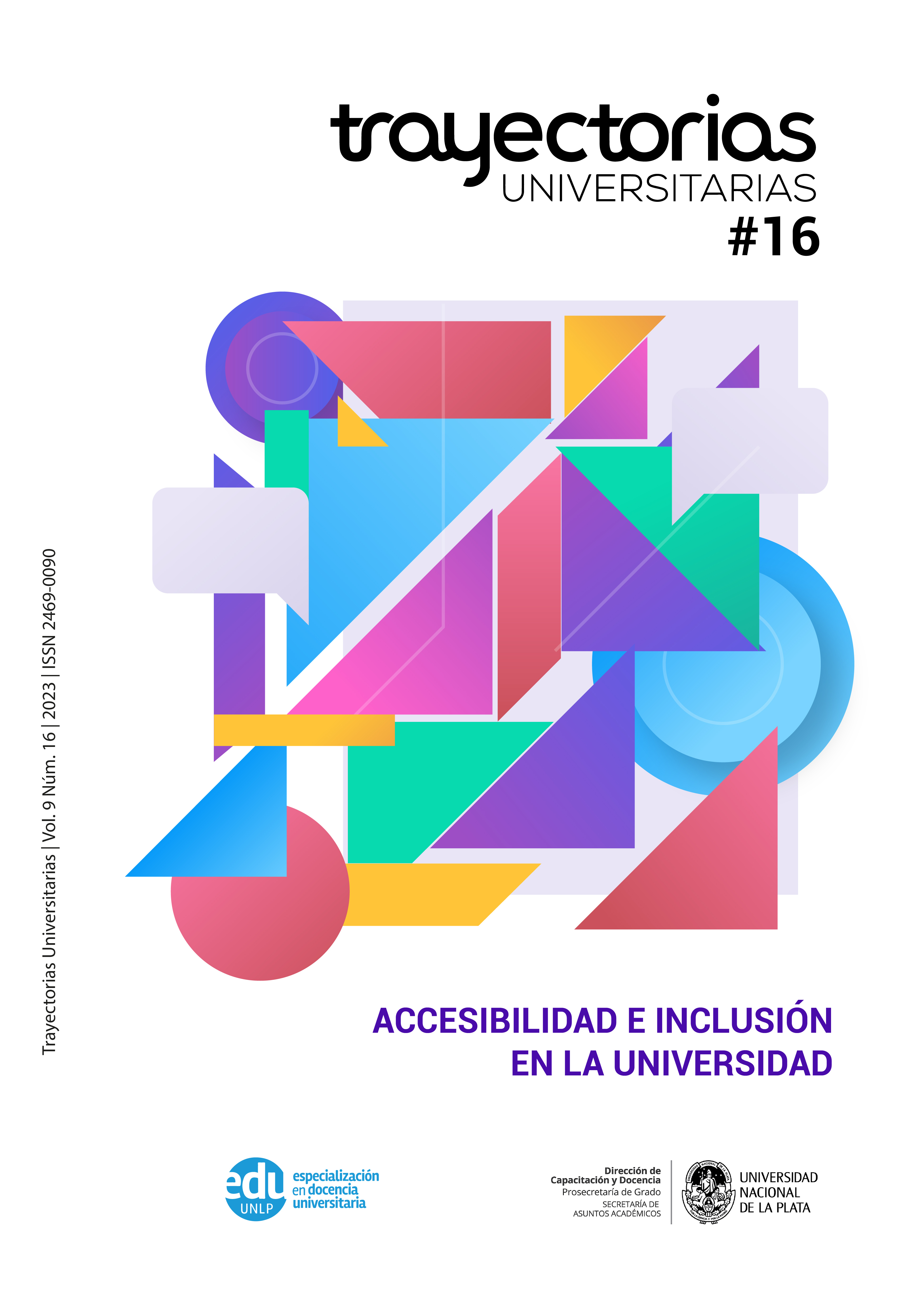The importance of accessibility in the Architecture career: Building inclusive spaces from university education
DOI:
https://doi.org/10.24215/24690090e125Keywords:
accesibility, architecture, rights, educationAbstract
Understanding accessibility as a characteristic of the environment that allows many people to access or be excluded, to be part of a certain social activity, to be included in the community or to be excluded, it is considered essential to assume the responsibilities and obligations that this entails, both in university training spaces and in professional life.
The question then arises of how to make the issue visible and sensitize students, future professionals, about the impact of design on the well-being of people, considering the diversity of users and their rights when designing, projecting and then building.
The teaching of accessibility in architectural education is essential to promote an equitable, democratic and inclusive society, since architecture has a direct impact on people's lives. Addressing this topic from the degree, promotes a change of perspective among future professionals, incorporating from a perspective of rights, knowledge and skills to design accessible and functional spaces for all people, regardless of their abilities.
Downloads
Metrics
References
Consejo Nacional de Coordinación de Políticas Sociales, ODS Argentina, Presidencia de la Nación. (s.f.). Los 17 Objetivos de Desarrollo Sostenible. https://www.argentina.gob.ar/politicassociales/ods/institucional/17objetivos
Convención Interamericana sobre la Protección de los Derechos Humanos de las Personas Mayores. 15 de junio de 2015. Ratificada en Argentina el 23 de octubre de 2017. https://www.oas.org/es/
Convención Internacional sobre los Derechos de las Personas con Discapacidad (2006). Ley Nacional 27.044 (2014). https://www.un.org/es
Estatuto de la Universidad Nacional de La Plata. 13 de enero de 2009. https://unlp.edu.ar/institucional/unlp/gobierno/estatuto_unlp-4287-9287/
Freire, P. (2005). Pedagogía del oprimido. Siglo Veintiuno.
Merlau Ponty, M. (1945). Fenomenología de la percepción. Gallimard.
Palacios, A. (2008). El modelo social de la discapacidad: orígenes, caracterización y plasmación en la Convención Internacional sobre los Derechos de las Personas con Discapacidad. (Col. 36). CERMI. https://dds.cepal.org/redesoc/publicacion?id=4010
Sassen, S. (2005). La ciudad Global: una introducción al concepto y su historia. Brown Journal of Word Affairs, 11(2), 27-43. https://bjwa.brown.edu/11-2/the-global-city-introducing-a-concept/
Downloads
Published
How to Cite
Issue
Section
License
Copyright (c) 2023 Florencia Zaslascky, Viviana Nora Di Lucca, Mabel Peiró Aparisi, María Alejandra Sofía

This work is licensed under a Creative Commons Attribution-NonCommercial-ShareAlike 4.0 International License.
La aceptación de un original por parte de la revista implica la cesión no exclusiva de los derechos patrimoniales de los/as autores/as en favor del editor, quien permite la reutilización, luego de su edición (postprint), bajo una Licencia Creative Commons Atribución-NoComercial-CompartirIgual 4.0 Internacional (CC BY-NC-SA 4.0).
Acorde a estos términos, el material se puede compartir (copiar y redistribuir en cualquier medio o formato) y adaptar (remezclar, transformar y crear a partir del material otra obra), siempre que a) se cite la autoría y la fuente original de su publicación (revista y URL de la obra), b) no se use para fines comerciales y c) se mantengan los mismos términos de la licencia.
La cesión de derechos no exclusivos implica que luego de su edición (postprint) en Trayectorias Universitarias los/as autores/as pueden publicar su trabajo en cualquier idioma, medio y formato; en tales casos, se solicita que se consigne que el material fue publicado originalmente en esta revista.
Tal cesión supone, también, la autorización de los/as autores/as para que el trabajo sea cosechado por SEDICI, el repositorio institucional de la Universidad Nacional de La Plata, y sea difundido en las bases de datos que el equipo editorial considere adecuadas para incrementar la visibilidad de la publicación y de sus autores/as.
Asimismo, la revista incentiva a los/as autores/as para que luego de su publicación en Trayectorias Universitarias depositen sus producciones en otros repositorios institucionales y temáticos, bajo el principio de que ofrecer a la sociedad la producción científica y académica sin restricciones contribuye a un mayor intercambio del conocimiento global.





















